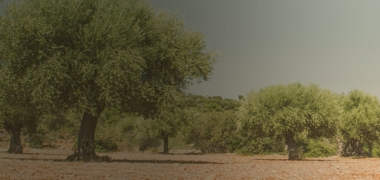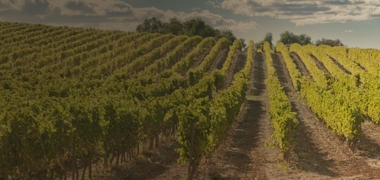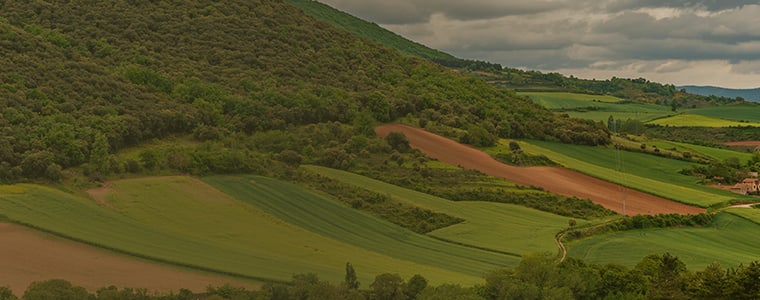Land in Leon - buy or rent plots as you wish
Where to buy land in León
The average price of urban land, just over 40€/m², in the province is the lowest in the whole of Castile and Leon. The cheapest plots of land in León are located in areas not far from the capital of León. Therefore, the localities with the lowest prices are: Astorga with the minimum value of 0.30€/m², followed by Chozas de Abajo with 1.40€/m² and El Carril with 1.60€/m². Other towns with the cheapest properties, in terms of average value, are La Baña, Villademor de la Vega, Ponferrada and San Andrés del Rabanedo.
Interestingly, León capital also registers the highest plot prices together with nearby towns. Thus, León registers the highest value with 802€/m², followed by Ponferrada with 417€/m² and La Bañeza with 315€/m². It is followed by Valencia de Don Juan, Calzadilla de Los Hermanillos, Robledo de la Valduerna, Villaquilambre, Lorenzana and Villeza, with an average value of 67€/m² and 280€/m². In relation to developable land, its situation is very similar to that of urban land, being scattered throughout the province, but most of them concentrated in the capital.
Economic development evolving from agriculture to the service sector
The province of León is located in the northwest of Castilla y León. It covers an area of 15,581 km² and is the second most populated province of the Autonomous Community, with a population of more than 490,000 people, half of which is concentrated around the areas of León and Ponferrada.
More than 50% of the total area is located above 1,000 meters of altitude, so it has a continental Mediterranean climate with Atlantic influence. It has a wide thermal amplitude, its winters are cold and long with snow and frosts (which prevent the cultivation of some fruit and vegetable crops in the highest and most mountainous areas), while summers are short and hot.
The economy is based on the service sector, construction, industry, energy and the primary sector. In the past it was the latter that stood out in the region, but with the passage of time, as in the rest of Spain, services and commerce have taken the lead. In fact, foreign trade is important in León, with exports of capital goods and non-chemical semi-factories.
The end of traditional activities has not been compensated by other economic sectors. Despite this, construction, agro-industry and energy stand out in this field.
The pharmaceutical industry, which was born in previous centuries, has been joined by new companies. In the textile sector, a few long-established companies survive.
The greatest development of industrial land has taken place around León and Ponferrada, in the industrial parks of Onzonilla, Villadangos, El Bayo and Bembibre.
The agricultural world adapts to changes
The primary sector represents 1% of the companies in León. It has more than 1,300,000 hectares of rural land, whose value has increased in recent years, used for pasture, arable crops, fodder, forestry and livestock. Most of the farms are smallholdings.
Thanks to its reservoirs and irrigation ditches, it is possible to grow fruit trees (apple, pear and cherry trees) and irrigated crops (especially in El Páramo), such as beets, potatoes, beans and sunflowers. Corn is also planted, and its modernized irrigation systems and its production, to which more than 70,000 hectares are dedicated, stand out. Although there are also dry crops such as vineyards and cereals (wheat, barley, rye, hops and oats). In addition, protein crops are nowadays an interesting alternative.
León is among the most important provinces in terms of cattle production, especially in the dairy area. Sheep are next, followed by goats, also for milk production. Pigs, on the other hand, occupy the last place in the Community. Poultry farming and beekeeping are booming, as facilities are being modernized and younger professional farmers are opting for these activities.
A diverse forest area
The orography of León is divided into three zones: the mountains (in the north and part of the western third), the plains (in the south and the eastern third) and the pits (in the western third). This means a great landscape diversity of great natural and cultural richness, between the mountains and the plateau. Throughout its territory there are protected natural spaces, many of them catalogued as Biosphere Reserves (more than 3,000,000 km² of the total provincial surface).
This situation has meant that the population centers have adapted to the morphology of the terrain. In the plains, meadows and riverbanks, is where more towns are located to take advantage of agricultural resources, while in the mountainous areas the villages are more scattered and extensive farms are appreciated.
Its mountains and plains are dominated by Mediterranean and Atlantic species, such as holm oak, juniper, oak, oak, birch, Scots pine, cork oak, almond and chestnut forests (in El Bierzo), beech (Faedo de Ciñera, considered the best kept forest in Spain) and oaks, the latter in the wettest areas, which occupies large tracts of land, as well as pastures and croplands. In addition to scrub: ferns, heather, gorse, broom, juniper, broom and broom. Also mosses, lichens and mycological flora. As well as riverside vegetation (poplars, willows, alders, poplars and ash trees).
The availability of these resources reflects the forestry potential of the region, in which the timber industry, ecotourism, forest-based agri-food, wood construction and biorefinery are developed.
Energy producer and consumer
The hydrographic network is made up of three basins: North, Miño-Sil (27% of the surface area) and Duero (72% of the surface area). Water surfaces, such as rivers, lakes and reservoirs are used in the production of hydroelectric energy, which is very important in this region, through dams and hydroelectric power stations. As well as for water supply, irrigation and nautical sports.
To these must be added the thermal power plants that use coal from Leon and its nine wind farms.
The energy sector contributes 11% of the province's GDP and the rest of the economic activities that are developed depend on it.
The province of León has gone from being agrarian to the service sector.
The availability of industrial land in León and its metropolitan area is scarce, but efforts are being made to expand it in order to attract investment capital to the area and develop business initiatives at affordable prices.











































































